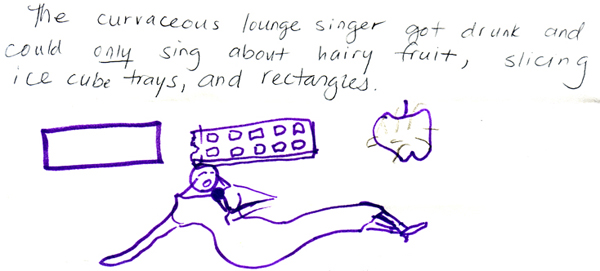Writing about Monsters and Manuals and rereading the abandoned Dungeons & Dragons blog Grognardia led me to think about a few more D&D-related topics, like dice and randomness.
All those funny-shaped D&D dice, subject of endless mirth and memes, serve a purpose quite different than moving a pawn around a playing board. D&D’s reliance on chance for story events—combat, encountering monsters, dealing with hirelings—represents an
embrace of events beyond your control as an integral part of the gaming experience…the ‘story’ arises from the synthesis of design, randomness, and reaction; it isn’t something you can set out to create.
Grognardia called this “the oracular power of dice,” a phrase I understood straightaway when I first read it.
While Gygaxian Naturalism may make D&D like playing within a fiction, there is no single author of the story. In any D&D session there’s the referee, the players, and the dice. The dice are the third team on the field.
Even the referee is subject to the winds of chance. If she dispatches a band of goblins at the players intending a slaughter, bad dice rolls on her part (or good rolls on theirs) may thwart her plans. Even if she tries to assist the players through a rough patch, the dice may decide otherwise. A novelist can put an authorial thumb on the scales to tip fortune toward or against his character. In D&D, the referee doesn’t have the same absolute freedom.
That’s not to say D&D is a game of mere luck. The referee and players make most of the decisions throughout the game. Gygax wisely corralled dice rolls to specific situations, containing their entropy to key decisive moments. (The history of D&D’s polyhedrons—originally, all were Platonic solids—is an interesting story in its own right.)
Everyone who plays D&D long enough develops a futility toward the capriciousness of the dice. Take away the dice, though, and you have something that’s not D&D.
Combining cooperation with chance reminds me of exquisite corpse, where multiple artists contribute portions to the final picture, even though none of them are permitted to see the rest of the page until the drawing is completed. The obvious difference is that in D&D the story’s contributions are guided by dice rolls rather than obscuring the page.
One exquisite corpse variant is Sentence Drawing Sentence, which I participated in many years ago:
- The first person writes a sentence
- The next person draws a picture beneath the sentence in reaction
- The next person writes a sentence beneath the drawing in reaction
- And so on until the page is full
The paper is folded back with each addition so the next person can only see the prior sentence or drawing.

Philip K. Dick threw I Ching coins while plotting The Man in the High Castle. The game …and then we died has players drawing Tarot cards to build a collaborative story of a gruesome death. (An obituary-writing game? Why not.)
Introducing cooperation and randomness to the creative process isn’t cheating, it’s adding more creativity. Embrace “the synthesis of design, randomness, and reaction.” These small chaos-es release the tight grip our ordered minds wish to exert over our creations, that impulse to micromanage every little detail of a short story or novel. Such creative games also fine-tune the internal “lighting rod of inspiration” I’ve written about before by introducing elements out-of-the-blue we may not have considered otherwise.
